|
Printables |
PowerPoints |
Online exercises |
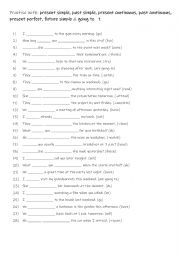
|
A2-B1 Practise with present simple, past simple, present continuous, past continuous, present perfect, future simple & going to 1
Students should practice the Present Simple, Past Simple, Present Continuous, Past Continuous, Present Perfect, Future Simple, and "Going to" tenses because these are fundamental to expressing a wide range of ideas in English. Mastering these tenses allows students to describe habits, routines, actions in progress, past events, completed actions, f...
Level: intermediate
Age: 8-100
Type:
Downloads: 124
|
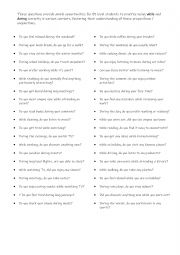
|
During or while Practise 3
This worksheet is designed to work along with the 2 other worksheets to provide ample speaking practise and to develop fluency when using while or during.The 40 generic questions provide ample opportunities for B1 level students to practice using while and during correctly in various contexts, fostering their understanding of these prepositions / c...
Level: intermediate
Age: 10-100
Type:
Downloads: 118
|
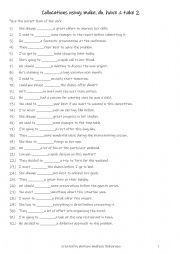
|
A2-B1 Collocations using make, do, have & take 2
Learning collocations with make, do, have, and take is important because they help you speak and write more naturally and fluently in English. These verbs often pair with specific nouns or phrases, and using them correctly improves your communication. For example, "make a decision", "do homework", "have a conversation", and "take a break" are commo...
Level: intermediate
Age: 8-100
Type:
Downloads: 114
|
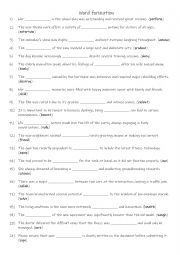
|
A2- B1 Word formation
Students read the sentences and complete the gap-fill with the correct form of the given word. Answers on page 2.
Level: intermediate
Age: 10-100
Type:
Downloads: 111
|
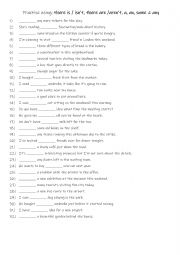
|
A1+-A2 Articles and quantifiers Practise using there is / isn�t, there are / aren�t, a, an, some & any
Learning the structures "there is / isn�t", "there are / aren�t", "a / an", "some", and "any" is essential for clear communication in English. They help students describe the existence or absence of things, specify quantities, and form both positive and negative sentences. "A" and "an" are used for singular, countable nouns, while "some" and "a...
Level: elementary
Age: 8-100
Type:
Downloads: 106
|
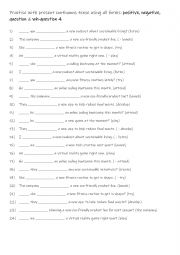
|
A1-A1+ Practise with present continuous tense using all forms positive, negative, question & wh-question 4
Each form is used 6 times! Answers on page 2.
Level: elementary
Age: 7-100
Type:
Downloads: 151
|
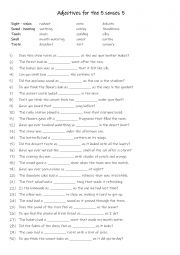
|
A2+-B1 Adjectives for the 5 senses 5
Students should learn sensory adjectives to expand their descriptive vocabulary and enhance their communication skills. These words enable vivid and engaging descriptions, bringing writing and speech to life with clarity and detail. Adjectives like "picturesque," "deafening," or "tangy" help students express nuanced observations, while emotive term...
Level: elementary
Age: 9-100
Type: worksheet
Downloads: 133
|
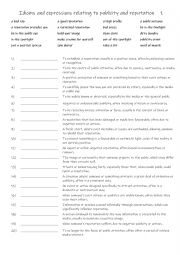
|
B1+-C1 Idioms and expressions relating to publicity and reputation 1
First, students need to familiarise themselves with the 20 idioms and expressions and their meanings. Then they read the definitions to see which one is being described and write that word in the space provided Answers on page 2.
Level: intermediate
Age: 12-100
Type:
Downloads: 113
|
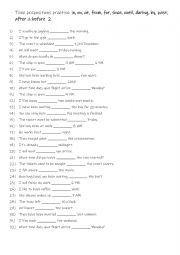
|
A2-B1 Time prepositions practise: in, on, at, from, for, since, until, during, by, past, after & before 2
Learning time prepositions like in, on, at, from, for, since, until, during, by, past, and after is important for students because they are essential for expressing time relationships clearly and accurately. These prepositions help students talk about when things happen, how long actions last, and their sequence in time. Mastering them allows stude...
Level: elementary
Age: 8-100
Type:
Downloads: 104
|
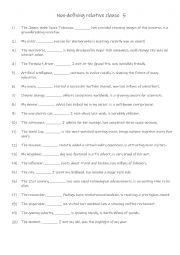
|
A2-B1 Non-defining relative clause 5
Students complete the gap-fill with the correct word. Answers on page 2.
Level: elementary
Age: 9-100
Type:
Downloads: 105
|
|
|
|
|












